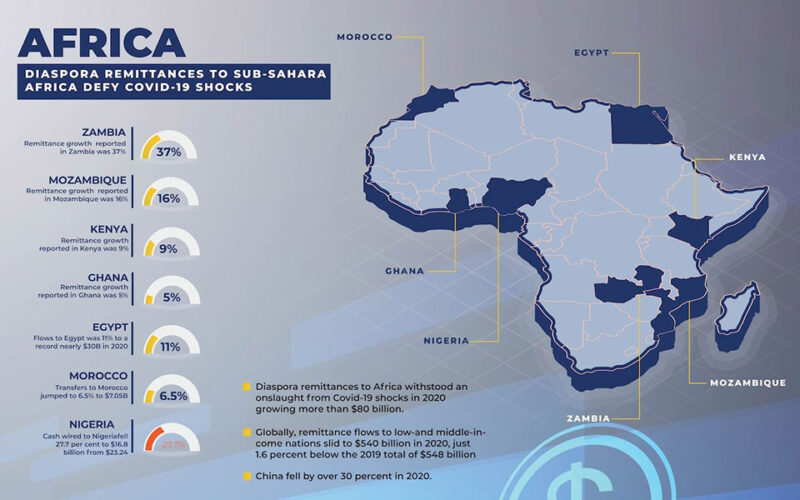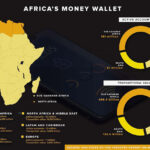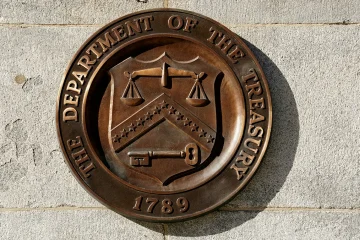DIASPORA remittances to Africa as a whole withstood an onslaught from COVID-19 shocks in 2020, growing more than 80 billion US dollars on the back of fiscal stimulus extended to workers in remitting countries like the United States and Europe, according to the World Bank.
This runs counter to trends that saw remittance inflows into low-and middle–income states worldwide shrink by 8 billion US dollars in 2020, due to the economic fallout from coronavirus lockdowns.
Remittance growth was prevalent in Zambia, at 37 percent, Mozambique at 16 percent, Kenya at nine percent and Ghana at five percent), according to the report. Flows to Egypt soared 11 percent to a record high of nearly 30 billion US dollars in 2020, while transfers to Morocco jumped 6.5 per cent to 7.05 billion US dollars.
“The resilience of remittance flows is remarkable. Remittances are helping to meet families’ increased need for livelihood support,” said Dilip Ratha, lead author of the report on migration and remittances and head of KNOMAD.
“They can no longer be treated as small change. The World Bank has been monitoring migration and remittance flows for nearly two decades, and we are working with governments and partners to produce timely data and make remittance flows even more productive.”
Globally, remittance flows to low-and middle-income nations slid to 540 billion US dollars in 2020, just 1.6 percent below the 2019 total of 548 billion US dollars, according to the Migration and Development Brief.
Nonetheless, this was a smaller drop than during the 2009 global financial crisis (at 4.8 percent) and far lower than the fall in foreign direct investment (FDI) flows to low-and middle-income countries, which, excluding flows to China, fell by over 30 percent in last year.
According to the World Bank, the negative trend resulting from COVID-19 shocks is about to substantially reverse, globally. “With global growth expected to rebound further in 2021 and 2022, remittance flows to low-and middle-income countries are expected to increase by 2.6 percent to $553 billion in 2021 and by 2.2 percent to $565 billion in 2022,” reads a World Bank report.
Remittances to Nigeria are also projected to bounce in 2021 and 2022 after a decline last year. Cash wired to Nigeria by its citizens abroad, including the United States and Europe fell 27.7 per cent in 2020 to 16.8 billion US dollars, from 23.24 billion dollars in 2019, due to COVID-19 induced economic shocks. A global recovery is expected to see that figure soar this year and next.














